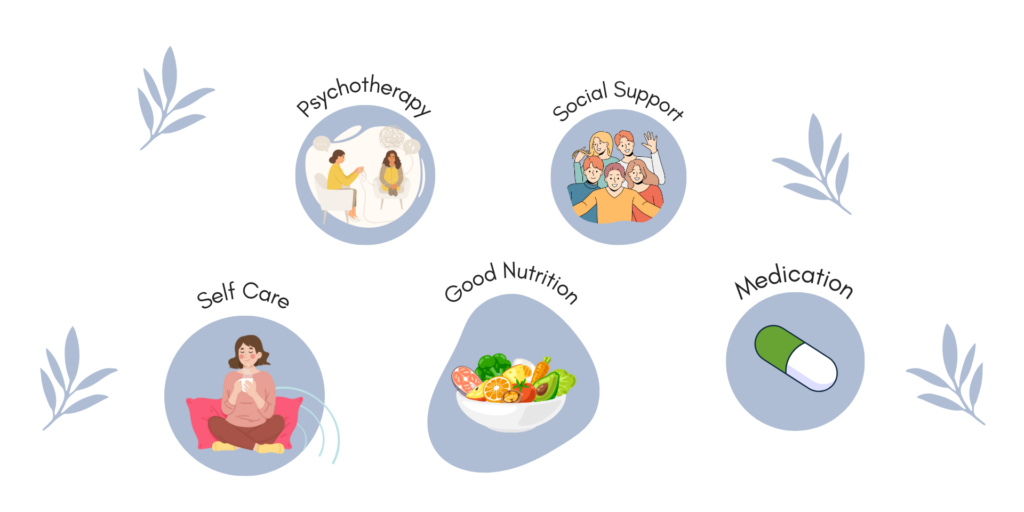Anxiety disorders are one of the most common mental health disorders affecting people today. Generalized Anxiety Disorder (GAD) is a type of anxiety disorder that affects a large percentage of the population. According to the Anxiety and Depression Association of America, GAD affects approximately 6.8 million adults in the United States, with women being twice as likely to be affected than men. GAD is a chronic and excessive worry about everyday life events without a specific trigger or cause. In this blog post, we will provide you with GAD’s critical information, including its causes, signs, symptoms, and treatment.
What Causes Generalized Anxiety Disorder (GAD)?
The exact cause of Generalized Anxiety Disorder (GAD) is still unknown; however, it is believed to be a complex interplay of various factors. These factors include genetic predisposition, chemical imbalances in the brain, and a combination of environmental and life experiences. Some of these experiences can include traumatic events, a history of abuse, or exposure to negative life events. Individuals with a family history of anxiety disorders, substance abuse, or depression may have a higher likelihood of developing GAD.
Moreover, it is important to note that GAD can also be triggered by significant stressful life events, such as the loss of a loved one, financial troubles, or relationship problems. These events can further exacerbate the anxiety symptoms and contribute to the development or worsening of GAD.
What Are Common Signs and Symptoms of GAD?
GAD’s symptoms manifest physically and psychologically, and they include excessive worry about things that are uncontrollable, fatigue and difficulty concentrating, muscle tension, restlessness and irritability, insomnia, and digestive issues such as diarrhea or constipation. It is important to note that experiencing occasional worry or anxiety is normal, but when your worries become uncontrollable and interfere with daily life activities, it’s crucial to seek professional help.
DSM-5 Criteria for GAD: To be diagnosed with GAD, an individual must meet the following criteria according to the DSM-5 – the Diagnostic and Statistical Manual of Mental Disorders:
- Excessive anxiety and worry about a range of events or situations lasting for at least six months.
- Difficulty controlling or stopping worrying.
- Anxiety and worry are associated with three or more symptoms such as restlessness, fatigue, difficulty concentrating, irritability, muscle tension, and sleep disturbances.
- The anxiety, worry, or physical symptoms cause clinically significant distress or impairment in social, occupational, or other important areas of functioning.
How Is Generalized Anxiety Disorder (GAD) Treated?
There is no single cure for GAD, and treatment may vary depending on the severity of the condition. However, the most effective treatments for GAD are a combination of psychotherapy, medication, and lifestyle changes. Cognitive-behavioral therapy (CBT) is a type of psychotherapy that focuses on changing an individual’s thoughts and behaviors that cause anxiety.
Anti-anxiety medication such as benzodiazepines, and antidepressants such as selective serotonin reuptake inhibitors (SSRIs) and serotonin-norepinephrine reuptake inhibitors (SNRIs), can also be prescribed to help manage anxiety symptoms. Additionally, lifestyle changes such as regular exercise, healthy eating, mindfulness and relaxation techniques, and avoiding caffeine and alcohol are essential in managing GAD.

Coping Strategies to Overcome Generalized Anxiety Disorder (GAD)
Managing Generalized Anxiety Disorder (GAD) effectively involves a combination of therapeutic strategies, lifestyle changes, and in some cases, medication.
- Therapy: Cognitive Behavioral Therapy (CBT) is a common form of psychological treatment for GAD. It helps individuals understand their thought patterns leading to anxiety and teaches them to replace it with positive or constructive thought patterns. The following article addresses When To Seek Therapy For Experiencing Anxiety.
- Mindfulness and Relaxation Techniques: Practices like meditation, yoga, and progressive muscle relaxation can help calm the mind and reduce the physical symptoms of GAD.
- Healthy Lifestyle Choices: Regular physical exercise, a balanced diet, and an adequate amount of sleep can significantly manage GAD symptoms. It’s also recommended to limit caffeine and alcohol intake as they can trigger or worsen anxiety.
- Social Support: Cultivating supportive relationships and sharing your feelings with family and friends can provide emotional relief.
- Medication: As we mentioned earlier, in some cases, medication may be prescribed by a healthcare provider to manage severe symptoms.
In conclusion, Generalized Anxiety Disorder (GAD) is a common and widespread mental health disorder that impacts millions of individuals across the globe. While the exact causes of GAD remain unclear, it is crucial to be aware of the signs and symptoms in order to obtain an early diagnosis and appropriate treatment. If you or someone you care about is experiencing symptoms indicative of GAD, it is highly recommended to seek professional assistance from a qualified mental health provider. Remember, there is a wealth of support available, and with the right combination of treatment modalities, lifestyle adjustments, and self-care practices, it is possible to effectively manage GAD and lead a meaningful and gratifying life.
Share Post:
Start your therapy journey today.
Schedule a 15-Minute Free Consultation With Our Intake Coordinator.




